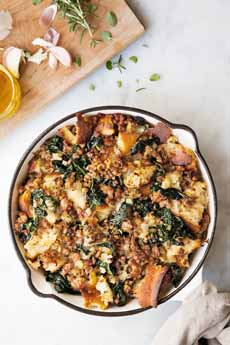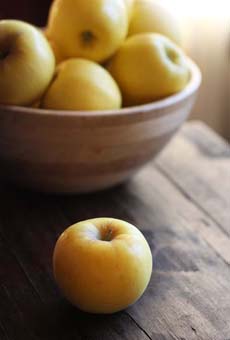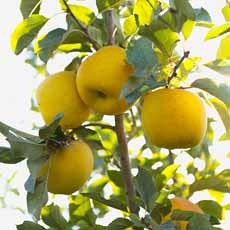|
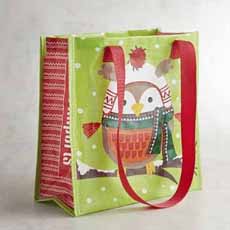
[1] Go green with reusable shopping bags (photo courtesy Pier 1 Imports).
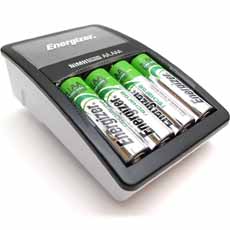
[2] Give rechargeable batteries with gifts that require batteries (photo courtesy Energizer).

[3] Some people would rather you give a donation in their name (image courtesy Feeding America).

[4] Use newspaper wrap to plain or fancy effect (photo courtesy Steemit).

[5] Buy a living tree that you can plant outside after the holiday (photo courtesy Paramount Landscaping).
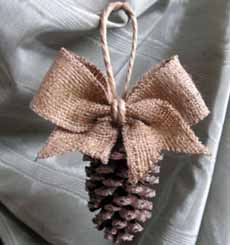
[6] Make tree ornaments from pine cones (this one from DIY Ready, more from Pinterest).
|
|
We try to live as green a life as possible: recycling everything we can, making judicious purchase choices, using a Sodastream and a water filter instead of tossing endless empty bottles into the landfill.
We don’t use wrapping paper, instead packaging gifts in reusable gift bags; and using our mom’s example of wrapping large gifts in yesterday’s newspapers (use the comics section for kids’ gifts).
We weren’t surprised to learn that, from Thanksgiving to New Year’s Day, household waste increases by more than 25%.
Environmental activist C.J. Quinn has devoted her life to raising awareness about environmental stewardship. She has shared with us her article, “Six Tips to Reduce Your Carbon Footprint During the Holidays.”
Give the earth a present this year, she says. “Celebrate the holidays with the gift of giving by knowing that you are thinking about the environment. Use the following tips this holiday season and smile because you are not only giving to your loved ones, but to our precious planet as well.”
Here are her tips, interspersed with a few of our own.
GIFT-BUYING TIPS
Bring your own bags when shopping; several reusable bags should do the trick (photo #1).
Get to know responsible manufacturers and shop green.
Buy energy-saving electronic items.
Buy rechargeable batteries for gifts that take batteries (photo #2).
Shop online and save gas (editor’s note: balance this with supporting local merchants).
Shop for fair-trade and locally made products.
Purchase natural and organically grown products.
Make your own gifts: bake, knit, sew, build, photograph, craft, etc.
GIFT-GIVING TIPS
Give a charitable donation in someone’s name (photo #3). Some people will prefer this to “more stuff.”
Give gift certificates to a spa, restaurant, concert, sporting event, rock climbing wall, etc.
Purchase memberships to a museum, theater, gym, etc.
Create coupons to cook dinner, babysit, pet sit, etc.
Try your hand at crafting: soap, candles, ornaments (photo #6), etc.
Propose a “white elephant” gift-giving to friends, family or your work group. Regifting is fun and purposeful…and empties out the closets of things you’ve never used.
GIFT-WRAPPING TIPS
Avoid paper that is made out of foil or metallic materials.
Purchase wrapping paper that is made out of recycled materials and can be recycled. Better yet…
Paint or stamp recycled kraft paper or plain shopping bags to make the wrapping personal (photo #4).
Wrap with newspaper. You can even make bows from it (photo #5). Tie with twine, which can be reused.
Wrap your gifts in large handkerchiefs or scarves (check out furoshiki, Japanese fabric wrapping).
Re-use ribbon and bows and keep the ones you get this year.
CHRISTMAS TREE TIPS
Buy a living tree that you can replant (photo #5).
Recycle your non-living (cut) tree after the holidays.
Plant a tree in your yard or in a pot on your rooftop to replace the tree you bought.
Buy an artificial tree and spray it with essential oils of cedar, pine, or any earthy fragrance to spread holiday cheer in your house.
Decorate your tree with ornaments that you find at thrift stores, or use pine cones (photo #6), origami or other homemade ornaments.
Take the old-fashioned approach, using strings of popcorn and cranberries instead of tinsel.
DECORATING TIPS
Use decorations year after year.
Set a timer for your lights to turn on at dusk and go off at bedtime.
Use LED string lights.
Use natural materials from your yard: branches, pine cones (photo #6), dried leaves, etc.
Use LED candles.
CHRISTMAS CARD TIPS
Send eCards.
Buy only holiday cards printed on recycled paper.
Make your own cards using recyclable materials.
Reducing your carbon footprint creates another kind of peace on earth—as well as your own peace of mind.
|
